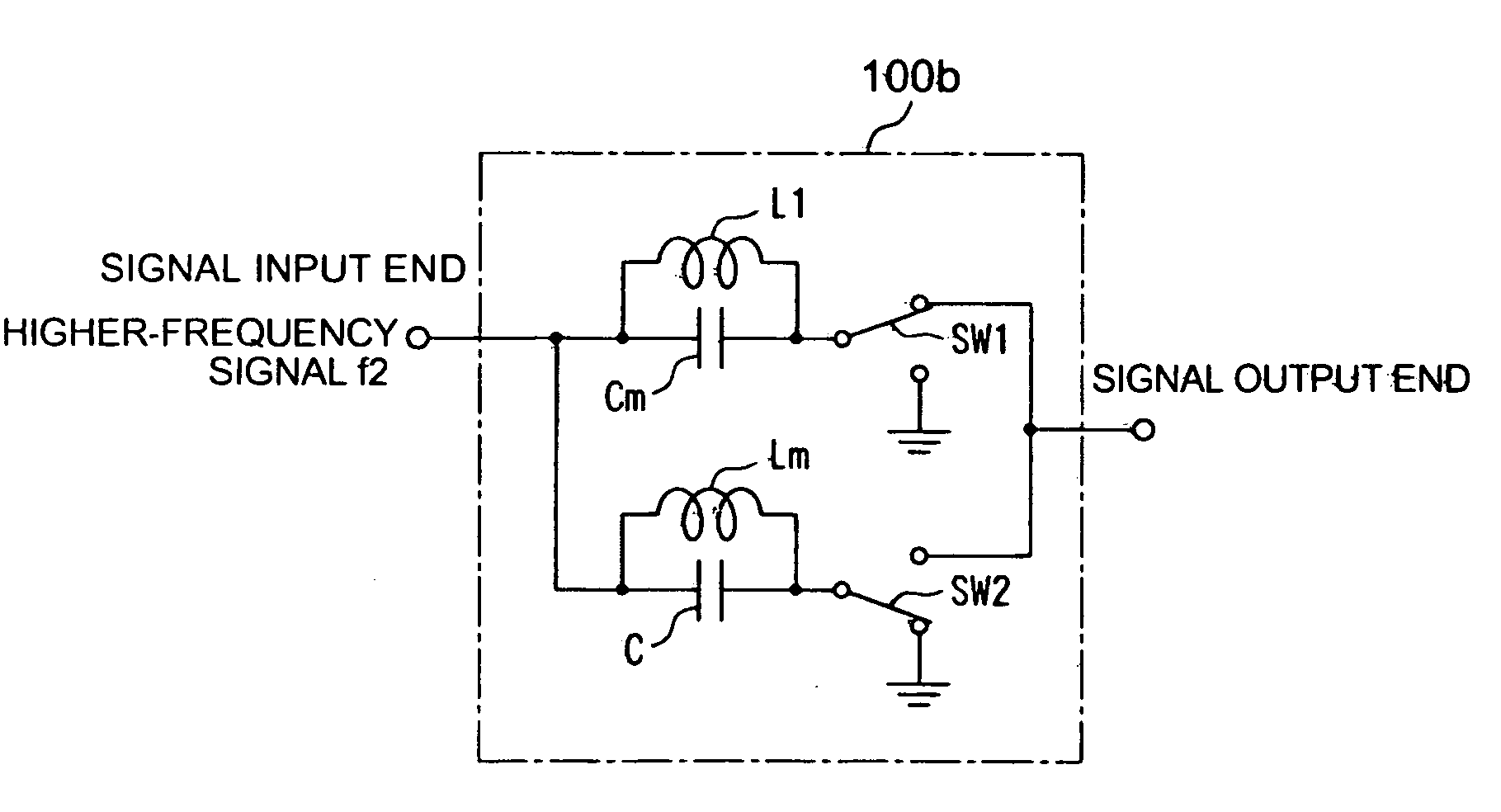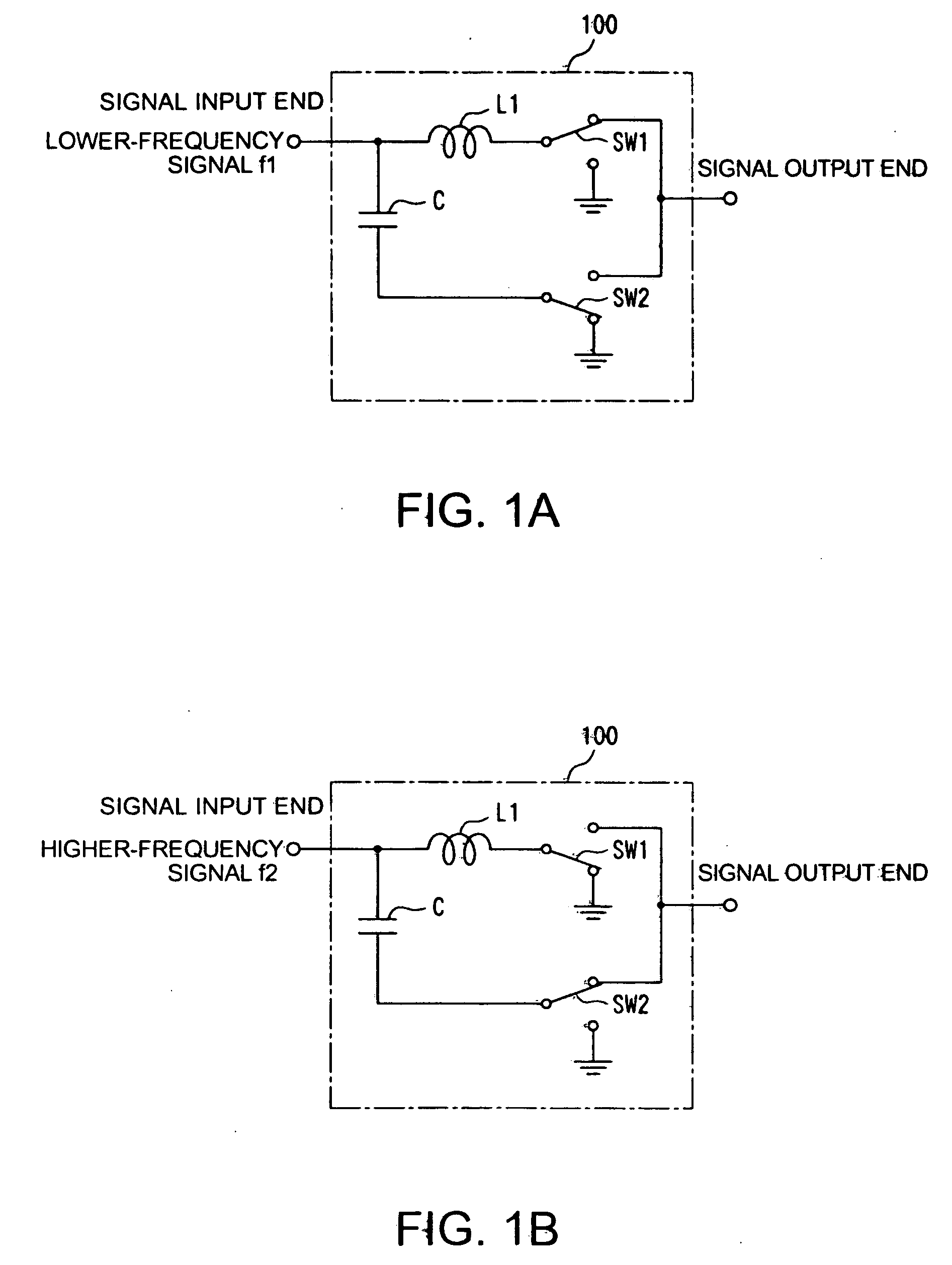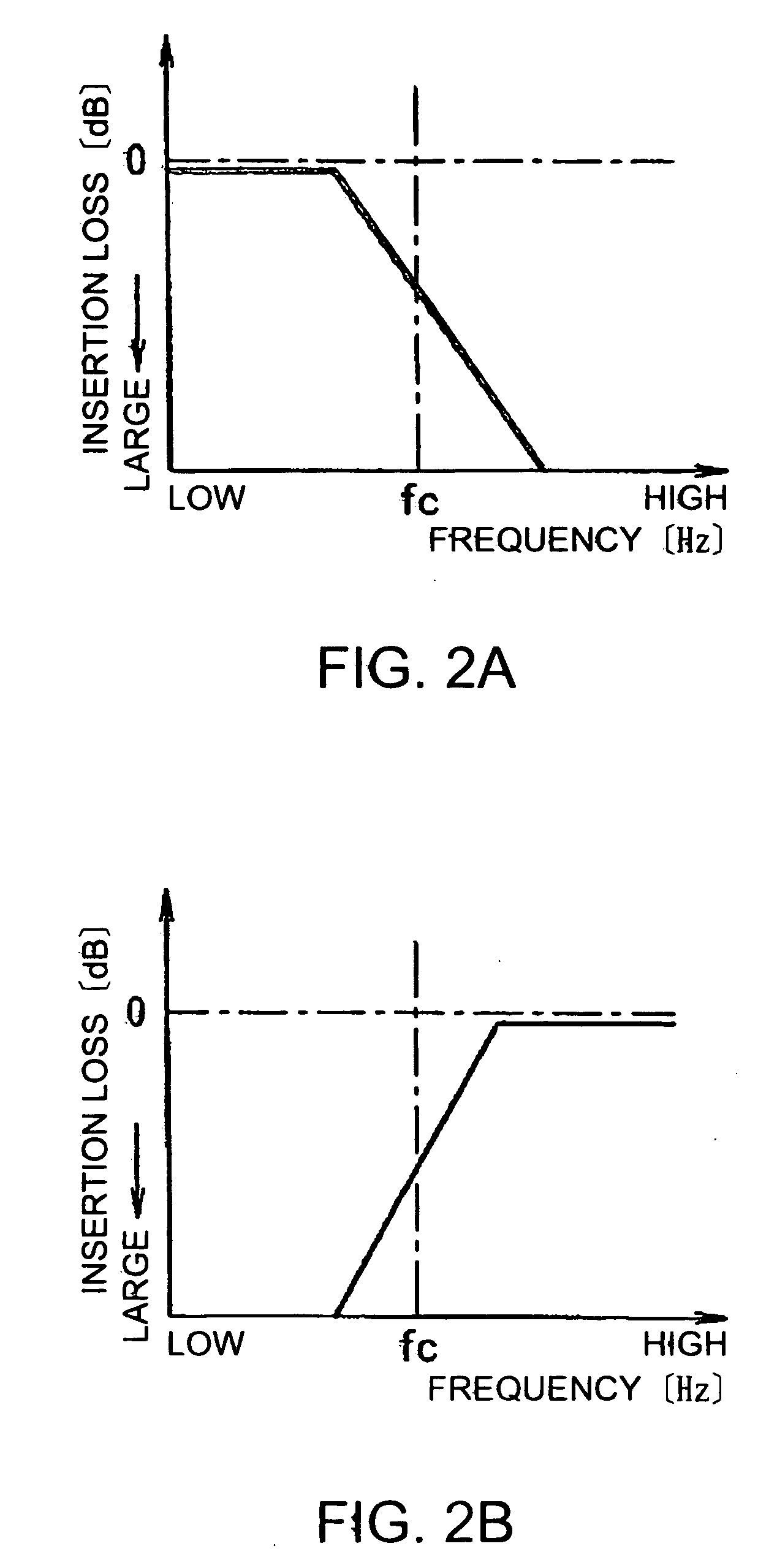Impedance circuit, and filter circuit, amplifier circuit, semiconductor integrated circuit, electronic component, and wireless communications device using the same
a filter circuit and filter circuit technology, applied in the direction of multiple-port networks, electrical devices, waveguide-type devices, etc., can solve the problems of reducing the number of components and the occupied area, and unable to achieve a circuit capable of attaining a satisfactory characteristic across all the usable bands, so as to reduce the size of the wireless communication device
- Summary
- Abstract
- Description
- Claims
- Application Information
AI Technical Summary
Benefits of technology
Problems solved by technology
Method used
Image
Examples
first embodiment
[0079] First, a first embodiment will be described.
[0080]FIG. 1 is a circuit diagram showing one example of a filter circuit 100 using an impedance circuit of the invention.
[0081] The filter circuit 100 according to the first embodiment comprises, as is shown in FIG. 1(a), an inductor L1 and a capacitor C which are lumped elements, and switch circuits SW1 and SW2. The inductor L1 forms a first impedance element and the capacitor C forms a second impedance element, while the switch circuits SW1 and SW2 form a first switch and a second switch respectively.
[0082] One end of the inductor L1 is connected to one end of the capacitor C to form a signal input end. Also, the other end of the inductor L1 is connected so the switch circuit, SW1, and the other end of the capacitor C is connected to the switch circuit SW2.
[0083] The switch circuit SW1 selectively connects the other end of the inductor L1 to either ground or a signal output end. Likewise, the switch circuit SW2 selectively con...
second embodiment
[0102] the invention will now be described.
[0103] A filter circuit 200 according to the second embodiment is, as is shown in FIG. 4, a filter circuit formed by using an inductor L2 which is a distributed element, instead of the inductor L1 which is a lumped element in the first embodiment shown in FIG. 1.
[0104] In this case, too, when a lower-frequency signal f1 is to be processed, as is shown in FIG. 4(a), the inductor L2 is connected to the signal output end and the capacitor C is connected to ground by manipulating the switch circuits SW1 and SW2 to form a low-pass filter circuit. In contrast, when a higher-frequency signal f2 is to be processed, as is shown in FIG. 4(b), the capacitor C is connected to the signal output end and the inductor L2 is connected to ground to form a high-pass filter circuit.
[0105]FIG. 5 shows a simulation result of a filter output from the filter circuit 200 shown in FIG. 4 when signal frequencies were varied, using a signal in the 2.4 GHz band as th...
third embodiment
[0110] the invention will now be described.
[0111]FIG. 6 shows the configuration of a filter circuit 300 according to the third embodiment, and as is shown in FIG. 6, the circuit 300 comprises a first filter portion 12, and a second filter portion 14 that uses an output of the first filter portion 12 as an input.
[0112] Each of the first filter portion 12 and the second filter portion 14 comprises the filter circuit 100 in the first embodiment, so that the first filter portion 12 and the second filter portion 14 are configured to have equal filter characteristics.
[0113] By connecting the first filter portion 12 and the second filter portion 14 having equal characteristics, that is, by connecting the filter circuits 100 in more than one stage, more rapid filter processing is enabled.
[0114] This embodiment described a case where the filter circuits are connected in two stages. However, when there is a need to secure a further sharper filter characteristic, the filter circuits are con...
PUM
 Login to View More
Login to View More Abstract
Description
Claims
Application Information
 Login to View More
Login to View More - R&D
- Intellectual Property
- Life Sciences
- Materials
- Tech Scout
- Unparalleled Data Quality
- Higher Quality Content
- 60% Fewer Hallucinations
Browse by: Latest US Patents, China's latest patents, Technical Efficacy Thesaurus, Application Domain, Technology Topic, Popular Technical Reports.
© 2025 PatSnap. All rights reserved.Legal|Privacy policy|Modern Slavery Act Transparency Statement|Sitemap|About US| Contact US: help@patsnap.com



